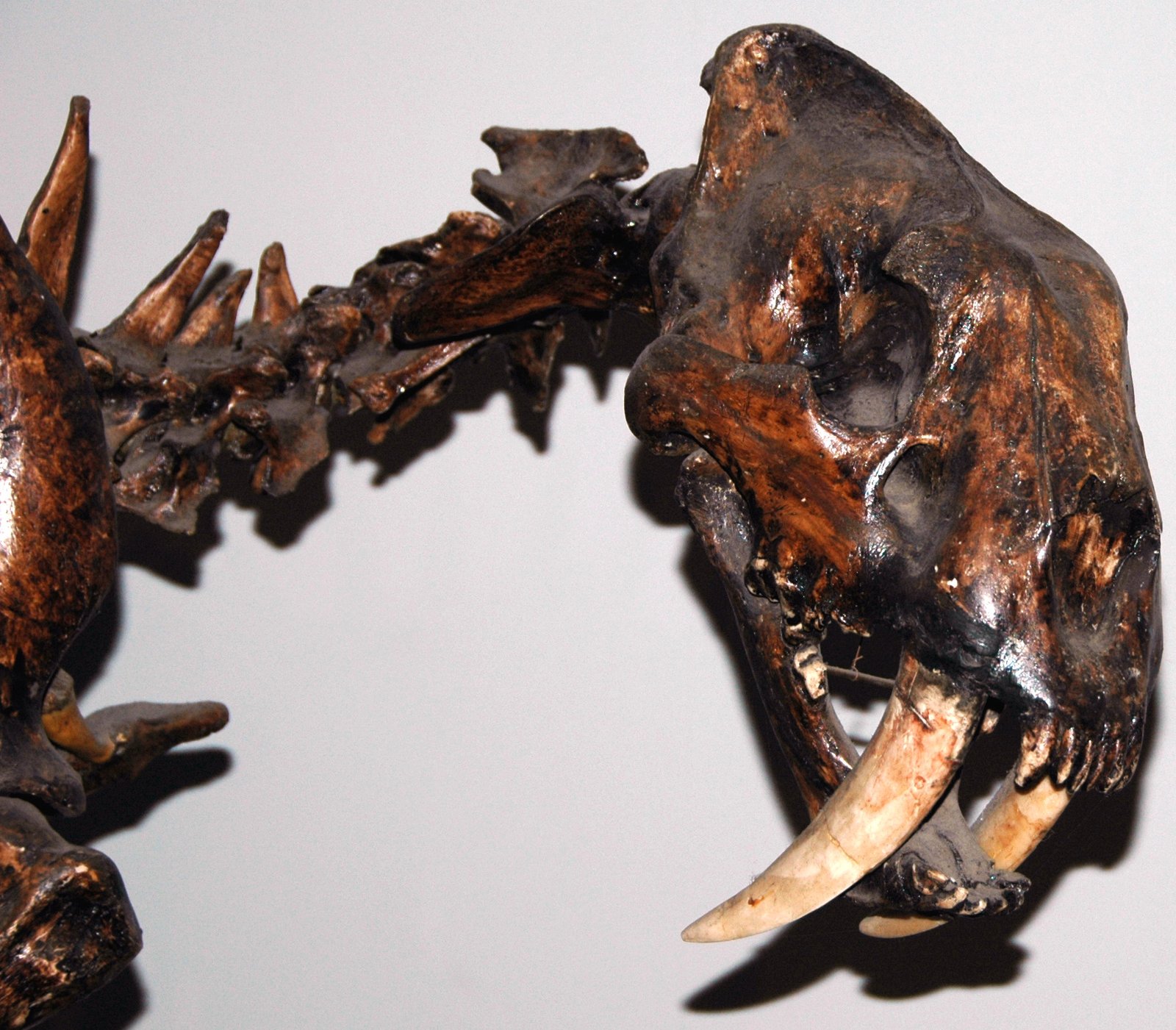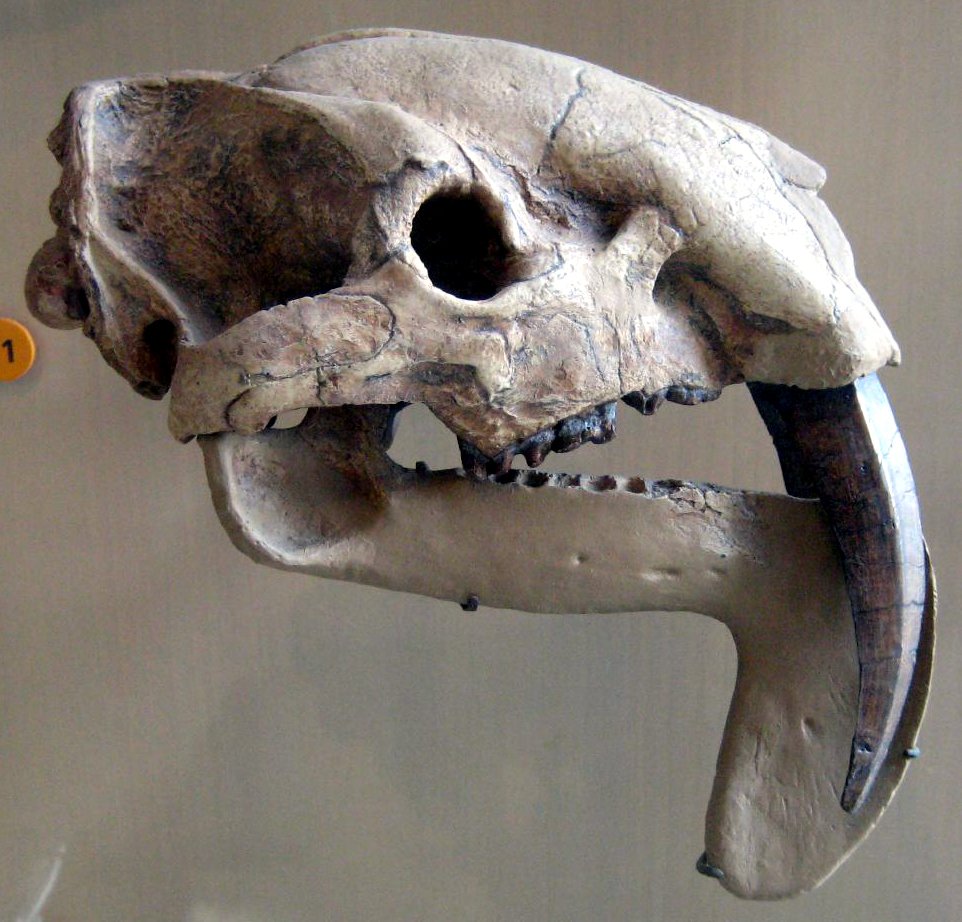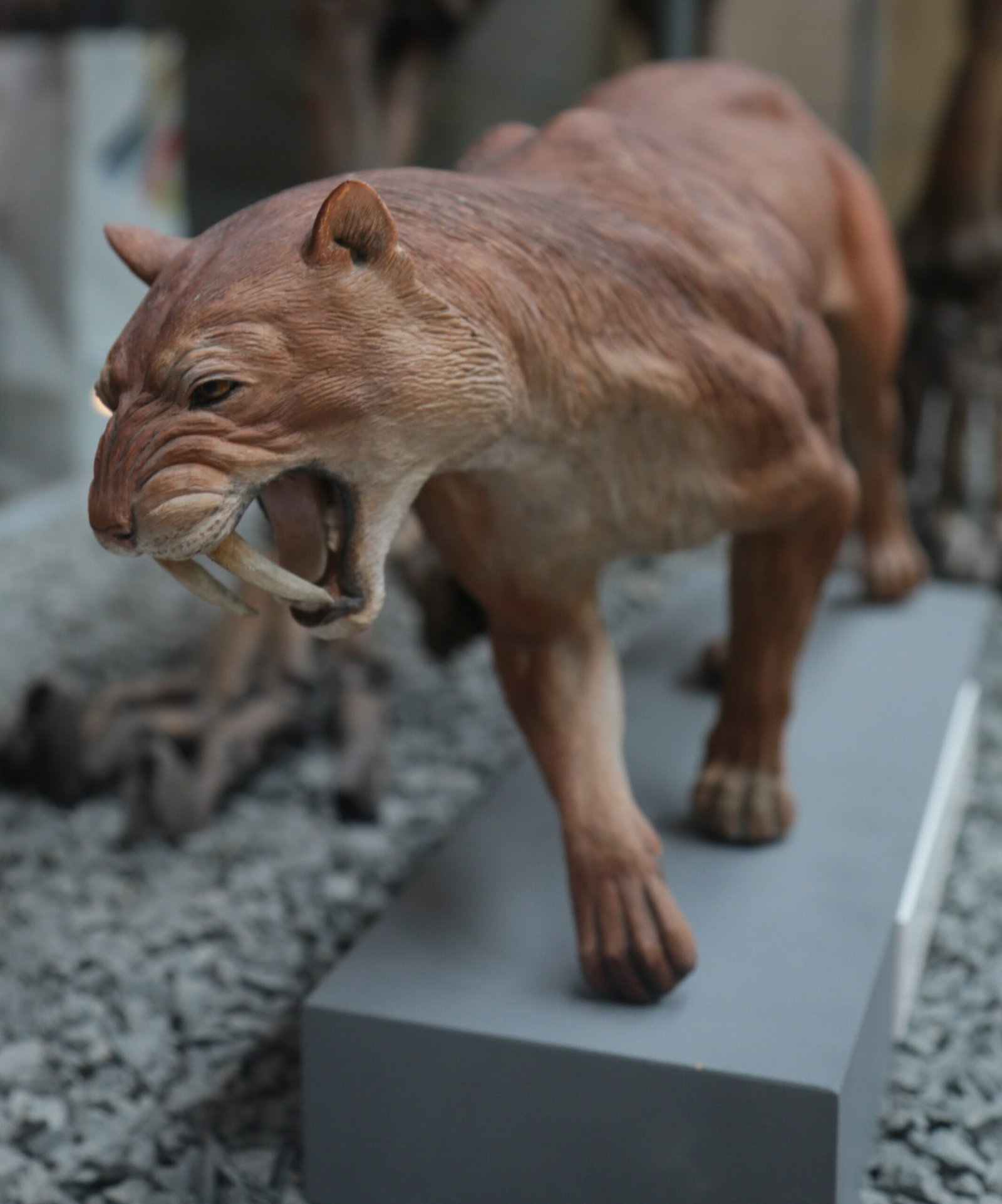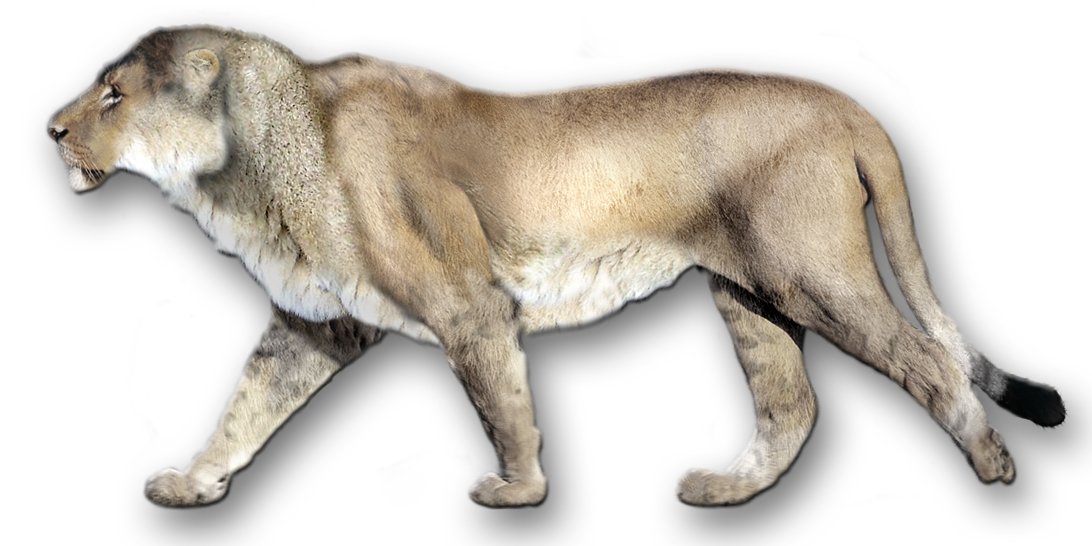Imagine a lion so massive, it would make today’s fiercest felines seem almost dainty. Panthera atrox, the legendary “American lion,” prowled ancient North America with a presence both awe-inspiring and mysterious. Its bones whisper stories of vanished landscapes, lost prey, and a wildness that still tugs at the heart of every cat lover. Let’s step into the shadow of this gigantic predator and discover the secrets that set it apart from every feline alive today.
A Giant Among Lions

Panthera atrox, often called the American lion, was a true giant of the prehistoric world, stretching up to an astonishing 12 feet from nose to tail and tipping the scales at over 900 pounds—eclipsing even the largest modern lions and tigers. Its immense size and powerful build would have made it an awe-inspiring predator, dominating the ancient plains with unmatched authority. This formidable cat likely relied on both strength and intimidation to secure its place at the top of the food chain. With its towering stature and fearsome presence, Panthera atrox was a breathtaking testament to nature’s raw, majestic power.
Shrouded in Ice Age Mystique

During the last Ice Age, Panthera atrox prowled the vast, untamed landscapes of North America, a realm it shared with colossal mammoths, fearsome saber-toothed cats, and relentless packs of dire wolves. This was a world far colder and harsher than today, where survival demanded both power and cunning at every turn. Amid towering glaciers and rugged plains, Panthera atrox reigned as one of the apex predators, navigating a life steeped in constant challenge and raw wilderness. Its presence painted a vivid portrait of an era when nature was both breathtakingly majestic and unforgivingly wild.
Not Your Typical Lion

Though often called the “American lion,” Panthera atrox was far from a carbon copy of today’s African lions. Subtle yet telling differences in its skull shape and jaw structure reveal that it followed a distinct evolutionary journey, adapting to the unique challenges of its environment. These anatomical variations suggest it may have hunted differently or taken down prey that modern lions wouldn’t. Far from just a prehistoric version of a familiar cat, Panthera atrox was a remarkable predator in its own right, shaped by the demands of an ancient, rugged world.
Territories That Stretched for Miles

Fossil discoveries reveal that Panthera atrox roamed an impressive range, stretching from the icy reaches of Alaska all the way down to the warm landscapes of Mexico. This mighty cat thrived in diverse habitats—from open grasslands and dense forests to rugged mountain terrain—showcasing remarkable adaptability. Such a wide ecological footprint speaks volumes about its resilience, hunting prowess, and ability to navigate a constantly shifting prehistoric world. Truly, Panthera atrox stands as a powerful testament to nature’s capacity for survival and evolution.
A Predator With Powerful Jaws

The American lion’s formidable jaws were engineered for far more than slicing through flesh; they possessed the crushing power needed to break the dense bones of giant sloths, horses, and other hefty Ice Age prey. This incredible bite force set Panthera atrox apart from its modern feline relatives, enabling it to tackle challenges that would overwhelm most predators. With jaws capable of splintering even the toughest skeletal armor, it ruled its domain with unrivaled might. Such raw power underscores why this magnificent cat stood at the very pinnacle of its ancient ecosystem.
Eyes Sharp as Ice

With its forward-facing, amber eyes, Panthera atrox likely possessed keen eyesight perfectly suited for hunting during the low light of dawn and dusk. Those striking golden eyes would have glimmered in the twilight, fixed intently on unsuspecting prey as it patiently watched and waited for the perfect moment to strike. This powerful visual edge made it a master of stealth and surprise, able to navigate the shadows with deadly precision. Just imagine those luminous eyes piercing the dim landscape—an awe-inspiring sight on the ancient plains.
Paws That Left a Mark

Panthera atrox’s enormous paws were equipped with formidable retractable claws, ideal for seizing struggling prey or navigating the rugged, uneven landscapes of its Ice Age world. Each powerful step pressed deep into the earth, leaving behind tracks that dwarfed even those of today’s largest lions. These oversized prints serve as silent echoes of a time when this mighty predator stalked mammoths, horses, and giant sloths across vast, wild territories. With claws ready to grip and climb, Panthera atrox embodied both raw power and remarkable agility, perfectly honed for its challenging environment.
A Roar That Carried for Miles

Scientists suspect that Panthera atrox possessed a roar as thunderous and commanding as, if not even more formidable than, today’s largest big cats. Imagine its deep, resonant call reverberating across vast Ice Age valleys, a chilling warning that sent prey and rivals alike scattering for cover. Such a powerful voice would have been more than just a sound—it was a declaration of dominance over its sprawling domain. In the haunting stillness of prehistoric landscapes, that mighty roar must have truly embodied the wild, untamed spirit of Panthera atrox.
Fur Built for the Cold

Panthera atrox probably wore a dense, tawny coat accented by lighter underbellies, perfectly adapted to help it vanish into the golden grasses or snowy expanses of its Ice Age world. This rich, insulating fur wasn’t just for camouflage—it served as vital protection against the biting cold of prehistoric winters. Cloaked in this natural armor, the American lion could roam vast, frigid landscapes in search of prey without succumbing to the elements. Its coat was both a shield and a silent ally, helping it survive—and thrive—in a harsh, unforgiving era.
Family Bonds in the Shadows

Some fossil sites hint that Panthera atrox may not have been a solitary hunter but instead lived in loose family groups, much like today’s African lions. Such social bonds would have offered incredible advantages, allowing them to coordinate and bring down enormous prey that a lone cat could never tackle alone. Working together, they could dominate the Ice Age plains with teamwork as much as sheer strength. This glimpse into their possible social lives adds a fascinating, almost tender layer to our understanding of these formidable predators.
Masters of the Hunt

As formidable apex predators, American lions prowled the prehistoric landscapes in search of bison, camels, horses, and even the vulnerable young of mighty mammoths. Their unmatched hunting skills made them key architects of their ecosystems, maintaining the delicate balance between predator and prey. Each successful hunt not only sustained their own survival but also rippled through the food chain, influencing the lives of countless other creatures. In this way, Panthera atrox didn’t just inhabit its ancient world—it helped shape the very rhythm of life and death across the Ice Age plains.
Fierce Competitors

Sharing its rugged territory with formidable rivals like the saber-toothed Smilodon and relentless packs of dire wolves, Panthera atrox lived in a world where survival was a constant contest. Each hunt was not only a vital opportunity but also a dangerous gamble, as securing a kill meant facing the very real threat of confrontation or theft by other powerful predators. In this harsh landscape, every meal was hard-won, a true prize snatched from the claws and jaws of equally hungry competitors. This daily struggle painted a vivid portrait of life during the Ice Age—a relentless dance of risk, reward, and raw survival.
Surprising Vulnerability

Despite its immense power, Panthera atrox wasn’t invincible; after a hard-fought hunt, it often had to vigilantly defend its kills from opportunistic scavengers and rival predators eager to steal a free meal. In the unforgiving world of the Ice Age, even a giant like this had moments of vulnerability—an ill-timed injury or prolonged hunger could quickly tip the scales against it. Each meal was a lifeline fiercely protected, a testament to the constant struggle that defined its existence. These moments of peril reveal that beneath its commanding presence, Panthera atrox faced the same harsh uncertainties as every creature in its wild domain.
Children of the Glaciers

These magnificent lions flourished during the icy grip of glacial periods, perfectly adapted to a world teeming with large prey. But as the ice sheets gradually receded and lush plains gave way to changing landscapes, their vital food sources began to vanish. Slowly, inevitably, climate change became a silent, relentless force that undercut their survival, shrinking both their territory and their chances to hunt. In the end, it was this quiet but powerful shift in the world around them that helped write the final chapter of Panthera atrox’s reign.
Echoes in Modern Cats

DNA studies reveal that Panthera atrox shares a close kinship with today’s lions and tigers, pointing to a deep, intertwined ancestry that shaped their evolution. This genetic link suggests they inherited not just physical traits, but also timeless instincts—raw courage, sharp cunning, and an innate love for wide, open landscapes where they could roam freely. It’s fascinating to think that beneath its prehistoric muscles and massive frame, Panthera atrox carried the same primal spirit that still burns in its modern cousins. In many ways, their legacy of power and wild grace continues to echo through the lions and tigers we know today.
Unearthing Their Bones

Many of our most remarkable glimpses into the world of Panthera atrox come from rich fossil sites like the La Brea Tar Pits, where countless bones lay trapped and preserved over millennia. Each fossil unearthed is like a page torn from a forgotten chapter of Earth’s history, offering precious clues about how these mighty cats lived, hunted, and ultimately perished. Encased in the sticky embrace of ancient tar, these remains stand as haunting testaments to a bygone era. Together, they weave a vivid tapestry of life and struggle on the prehistoric plains, allowing us to piece together the remarkable saga of the American lion.
Artistry in the Bones

The impressive shape of Panthera atrox’s skull and formidable fangs has long captivated both artists and scientists, sparking vivid reconstructions of this Ice Age titan. Each fossilized bone serves as a vital puzzle piece, fitting together to reveal not just the anatomy of a predator, but also the intricate dynamics of a world that no longer exists. Through these ancient remnants, we catch glimpses of roaring hunts, tense standoffs, and vast, untamed landscapes. In studying its bones, we do more than rebuild a creature—we breathe life back into an entire lost epoch.
Conservation Lessons From the Past

The extinction of Panthera atrox stands as a powerful reminder of how swiftly even the most formidable creatures can disappear when faced with a changing world. This vanished giant teaches us that strength alone is no safeguard against shifting climates and dwindling habitats. By reflecting on the fate of this colossal ancestor, we’re urged to act wisely and decisively to protect today’s big cats, whose future hangs in a similarly delicate balance. In safeguarding them, we honor not only their survival, but also the enduring legacy of magnificent predators like Panthera atrox.
Feline Grace, Prehistoric Power

Despite its towering size and muscular build, Panthera atrox embodied the effortless grace of all great cats—creeping soundlessly through tall grasses, eyes locked on its prey. When the moment struck, it unleashed a burst of breathtaking speed, closing the gap in an instant with powerful, fluid strides. Just as quickly, it could melt back into the shadows, a ghost on the prehistoric plains. Its lithe agility was every bit as awe-inspiring as its raw strength, making it a true master of stealth and power.
Legends in the Dust

Tales of giant lions have long rippled through Native American legends, blending awe and mystery into stories passed down through generations. Even today, Panthera atrox stirs our imaginations, haunting our dreams of a wilder, grander past. Its shadow lives on not only in fossil halls and scientific studies, but also in the enduring myths and the timeless questions we continue to ask. In this way, the great American lion remains very much alive—in our stories, our wonder, and our deep fascination with the lost worlds it once ruled.
The Spirit of Wild America

Panthera atrox is far more than a mere relic of the past; it stands as a vivid emblem of the wild, untamed spirit that once ruled ancient America. This mighty predator captures the essence of raw power and enduring mystery, reminding us of a time when colossal beasts roamed vast, unspoiled landscapes. Its story also serves as a poignant symbol of nature’s fragile balance, where even the mightiest can fall when the scales tip. In honoring Panthera atrox, we celebrate not just a magnificent creature, but the profound, intricate dance of life that has always shaped our world.
A Cat That Changed the Landscape

By preying on massive herbivores and keeping animal populations in check, Panthera atrox was a vital force in maintaining the health and balance of its ancient ecosystems. Its powerful presence helped sculpt the very dynamics of life on the Ice Age plains, influencing which species thrived and how landscapes evolved. When this great predator vanished, it left behind a profound ecological void, triggering cascading changes that forever altered the communities it once ruled. In this way, the story of Panthera atrox is not just about what was lost, but also how its absence reshaped the course of nature itself.
A Glimpse Into Lost Worlds

Each fossil and carefully reconstructed skeleton of Panthera atrox serves as a time capsule, granting us a fleeting window into a world both breathtaking and alien to our own. It was a realm where colossal cats prowled beneath icy skies, where mammoths lumbered across frozen rivers, and untamed wilderness stretched endlessly beyond the horizon. These ancient remnants invite us to imagine a time of raw, primal beauty and relentless survival. In studying them, we momentarily step back into that lost age, marveling at the grandeur and ferocity of a planet that once was.
What If They Still Walked Among Us?

Picture yourself wandering through a dense forest, only to catch a glimpse of a shadow as massive as a bear slipping silently between the trees—would your heart race with fear, or would you stand rooted in awe? The very idea sends a shiver down the spine, stirring something primal within us. It’s a thrilling, humbling reminder of how small we are next to the giants that once ruled this Earth. Just imagining such an encounter bridges the gap between past and present, connecting us to a wilder, more mysterious world.
The Enduring Mystery

For all the remarkable insights we’ve gained, Panthera atrox continues to guard countless secrets beneath layers of time and stone. Each fossil unearthed whispers hints of untold chapters, reminding us how much of its life remains shrouded in mystery. Its story is far from complete—still patiently waiting in the earth for the next curious mind to dig deeper and reveal more. In this way, the great American lion invites us on an ongoing journey of discovery, fueling our wonder with every new clue.

Suhail Ahmed is a passionate digital professional and nature enthusiast with over 8 years of experience in content strategy, SEO, web development, and digital operations. Alongside his freelance journey, Suhail actively contributes to nature and wildlife platforms like Feline Fam, where he channels his curiosity for the Feline into engaging, educational storytelling.
With a strong background in managing digital ecosystems — from ecommerce stores and WordPress websites to social media and automation — Suhail merges technical precision with creative insight. His content reflects a rare balance: SEO-friendly yet deeply human, data-informed yet emotionally resonant.
Driven by a love for discovery and storytelling, Suhail believes in using digital platforms to amplify causes that matter — especially those protecting Earth’s biodiversity and inspiring sustainable living. Whether he’s managing online projects or crafting wildlife content, his goal remains the same: to inform, inspire, and leave a positive digital footprint.






